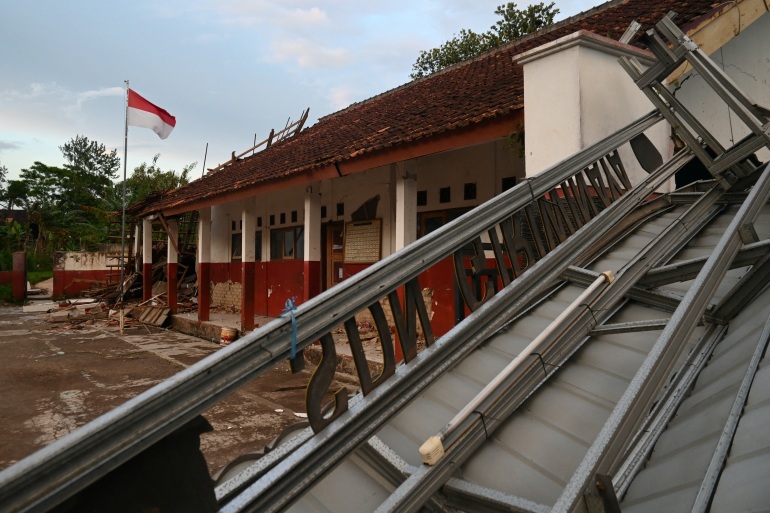Rescue workers in Indonesia are racing to reach people still trapped in rubble after an earthquake devastated a West Java town on Monday, killing dozens of people and injuring hundreds as buildings collapsed.
The epicentre of the shallow 5.6-magnitude quake was close to the town of Cianjur in a mountainous area of West Java, Indonesia’s most densely-populated province.
Overnight, a hospital car park in Cianjur was inundated with victims, some treated in makeshift tents, others hooked up to intravenous drips on the pavement, while medical workers stitched up patients under torchlight.
“Everything collapsed beneath me and I was crushed beneath this child,” Cucu, a 48-year-old resident who had gone to the hospital, told the Reuters news agency.
“Two of my kids survived, I dug them up … Two others I brought here, and one is still missing,” she said through tears.
On Tuesday morning, hundreds of police officers had been deployed to assist in rescue efforts, Dedi Prasetyo, a national police spokesperson, told the Antara state news agency.
“Today’s main task order for personnel is to focus on evacuating victims,” he said.
The West Java Governor Ridwan Kamil said at least 162 people were killed in Monday’s earthquake, many of them children, with more than 300 injured. Indonesia’s national disaster agency (BNPB) said it had confirmed the deaths of 62 people, but had not verified 100 additional victims.
The governor warned some residents remained trapped in isolated places, and that the death toll could rise.
Authorities were operating “under the assumption that the number of injured and death will rise with time”, he said.
Landslides, power cuts
Save the Children Indonesia said it was deploying a team to the area on Tuesday to assess the impact of the disaster and determine the needs of the children and adults affected. It is also preparing school tents, back-to-school kits, educational recreation kits, and family hygiene kits for distribution.
At SMP Junior High School 5, one of the schools with which Save the Children works in West Java, teacher Mia Saharosa said everyone was forced to evacuate during class.
“It was a shock to all of us as it occurred in the middle of the learning process … We all gathered in the field, children were terrified and cried, worried about their families at home. We hug each other, strengthen each other, and continue to pray,” she was quoted saying by the nongovernmental organisation in a statement.
Officials were working on Tuesday to reach the area of Cugenang, which was cut off by a landslide caused by the quake.

Rescue efforts were complicated by electricity outages in some areas, and more than 80 aftershocks.
The earthquake, felt strongly some 75km (45 miles) away in the capital Jakarta, damaged at least 2,200 homes and displaced more than 5,000 people, the BNPB said.
Straddling the so-called Ring of Fire, an active seismic zone where different plates on the earth’s crust meet, Indonesia has a history of devastating earthquakes and volcanic eruptions.
In September 2018, a 7.5 magnitude earthquake struck in shallow waters off the city of Palu in Sulawesi, triggering a tsunami, liquefaction and landslides that devastated the city and killed more than 4,000 people.
In December 2004, a 9.1 magnitude earthquake off Sumatra island in western Indonesia triggered a giant tsunami that swept ashore in 14 countries around the Indian Ocean, killing 226,000 people, more than half of them in Indonesia.
Sumber: www.aljazeera.com
 Skip to content
Skip to content


